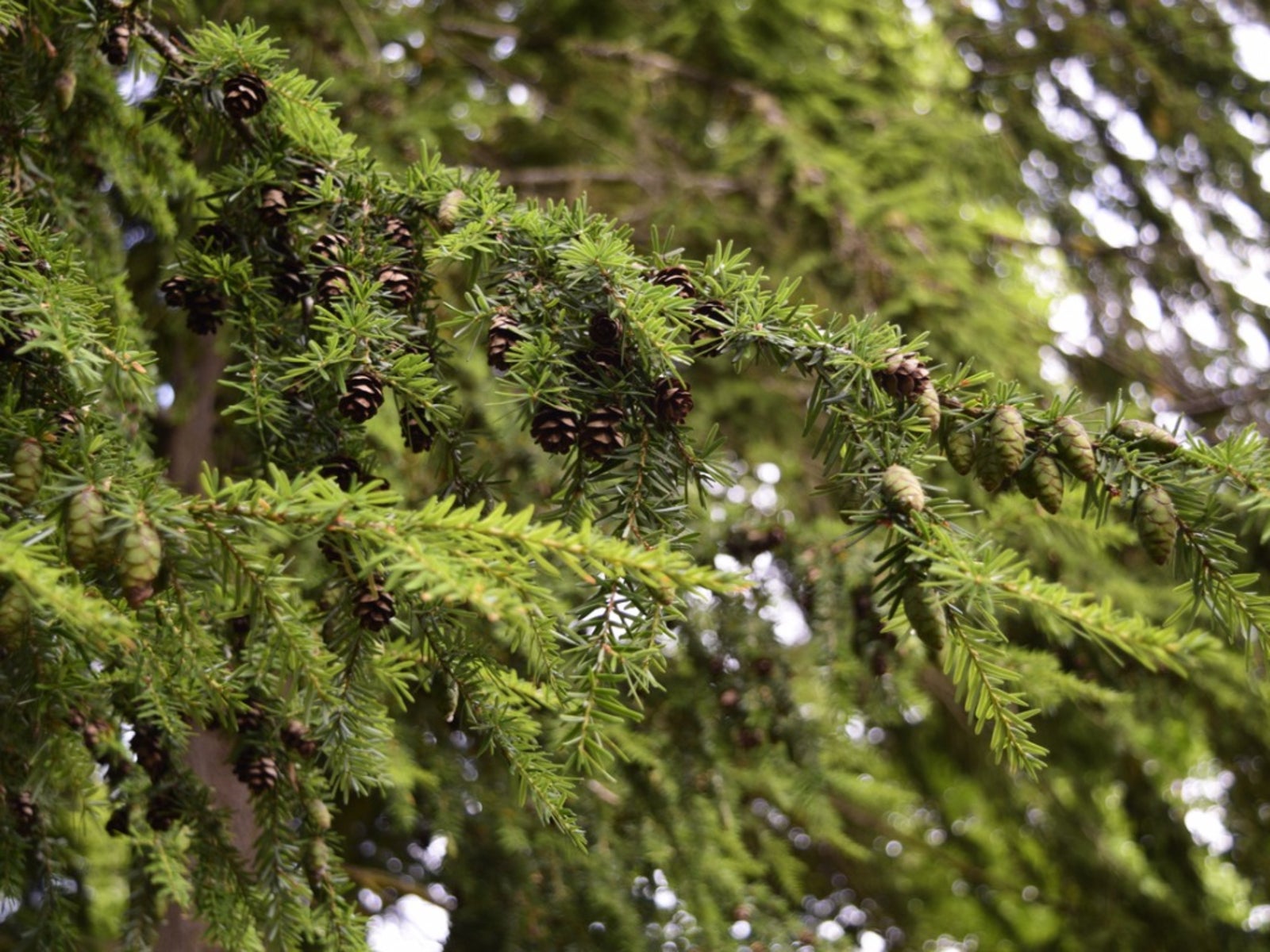Pruning Hemlock Trees - How And When To Prune Hemlocks


Hemlock trees are a popular conifer that is commonly used as either privacy shrubs or as visual anchor trees in the landscape. Most of the time, pruning hemlocks is not necessary, but occasionally weather damage, disease, or competing main trunks on upright hemlocks can create the need for pruning hemlocks. Keep reading to learn how and when to prune hemlocks.
When to Prune Hemlocks
If you find that you need to prune your hemlock tree, the best time for trimming hemlocks is either in spring or early summer. At this time, the tree is getting ready for or is already in active growth and will recover quickly from any hemlock pruning that needs to be done. In fall and winter, hemlocks are preparing to go dormant and are hardening themselves to be able to withstand the cold of winter. Pruning hemlock trees in fall or winter can confuse the tree, causing it to return to active growth rather than dormancy. At best, the new growth it does produce will be killed off in the cold and, at worst, the entire tree will be unable to withstand the winter cold and the entire tree will die.
How to Prune Hemlock Trees
Trimming Hemlock to Correct Damage from Weather or Disease
High winds or heavy snows can sometimes damage the branches of a hemlock and you may need to prune the tree in order to remove some of the damage or to help reshape the hemlock. Disease may also kill back some of the branches on the tree and you will need to remove the diseased branches. The first step in pruning hemlocks is use a clean, sharp pair of pruning shears or pruning saw, depending on the size of the branches you need to prune. Clean and sharp pruning tools will help to prevent disease. The next step in trimming hemlock branches is to select which branches need to be removed. Select the branches before you start trimming so that you do not over prune the tree accidentally. Then make your pruning cuts just above the needle whorls. Hemlock trees will grow new branches from the needle whorls, and pruning just above them will ensure that the new branches come in properly. If damage to the hemlock tree is extensive, severe pruning may be needed. Hemlock trees can withstand severe pruning and will recover from losing as much as 50% of its branches.
Pruning Hemlocks to Remove Competing Main Trunks
Upright hemlock varieties look best when they have only one main trunks, so homeowners often want to remove secondary upright trunks that may start to grow. These secondary trunks can be pruned back to their starting point on the main trunk or can be cut at any point along the trunk to stop its upward growth and encourage side growth instead.
Sign up for the Gardening Know How newsletter today and receive a free copy of our e-book "How to Grow Delicious Tomatoes".

Heather Rhoades founded Gardening Know How in 2007. She holds degrees from Cleveland State University and Northern Kentucky University. She is an avid gardener with a passion for community, and is a recipient of the Master Gardeners of Ohio Lifetime Achievement Award.